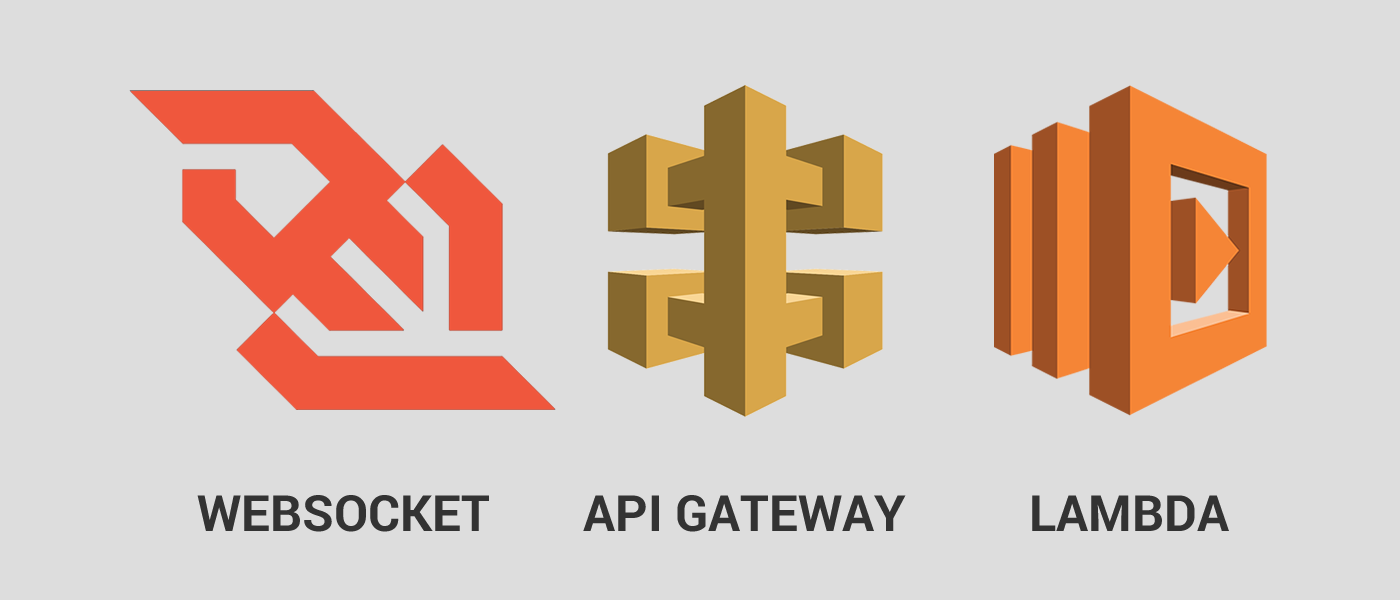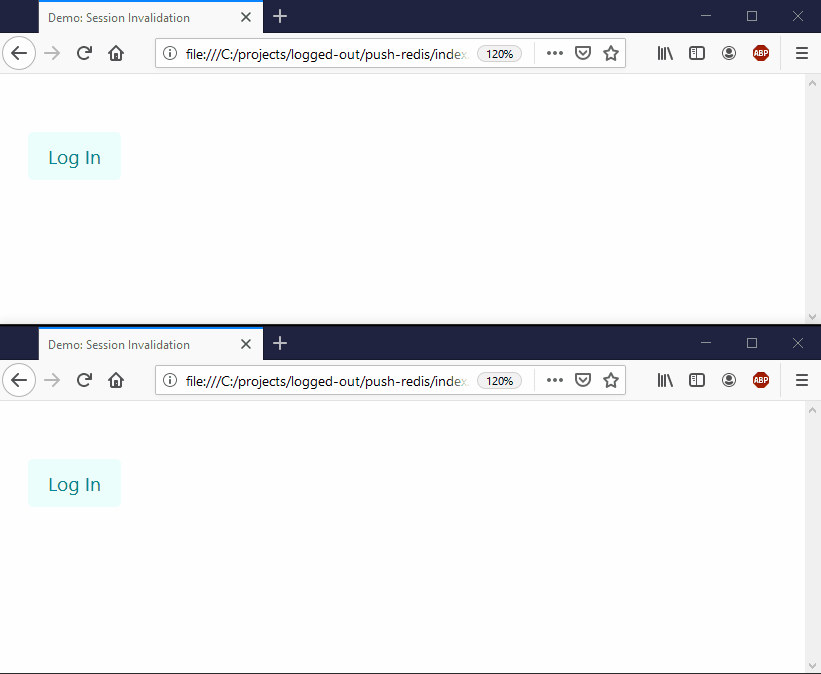
2018 was the year I won many imaginary arguments about why a serverless WebSocket API Gateway will never work. I was wrong.
Before I atone, let me explain: serverless patterns work best when state is separated from execution logic, but I argued that the two are inseparable in real-time applications, pertaining to connection state. So when the API Gateway team announced WebSocket support at re:Invent, I was eager to learn more.
Let’s refactor a simple real-time app into a serverless real-time app and deploy it to a WebSocket API Gateway.
Hello Hello
We begin with a simple NodeJS client that talks to wss://echo.websocket.org:
const WebSocket = require('ws');
const readline = require('readline');
const url = process.argv[2];
const ws = new WebSocket(url);
ws.on('open', () => console.log('connected'));
ws.on('message', data => console.log(`From server: ${data}`));
ws.on('close', () => {
console.log('disconnected');
process.exit();
});
readline.createInterface({
input: process.stdin,
output: process.stdout,
}).on('line', data => {
ws.send(data);
});I’ve also prepared a demo repo:
git clone https://github.com/robzhu/ws-demos
cd ws-demos/echo
npm install
node client wss://echo.websocket.org
# Once the process starts, type something and press enter
connected
> happy 2019
From server: happy 2019If we want to implement the echo server functionality locally:
const WebSocket = require('ws');
const wss = new WebSocket.Server({port: 8080});
wss.on('connection', socket => {
socket.on('message', data => {
socket.send(data);
});
});
console.log(`Listening on ws://localhost:8080`);# Terminal Tab A
node serverLocal
# Terminal Tab B, note 'ws' protocol, not 'wss'
node client ws://localhost:8080How would we prepare this code for use with API Gateway? Those ten lines of code are actually doing several things:
- Accepting incoming websocket connections
- Listening for incoming messages
- Giving the message handler access to the source socket, on which to send data back to the client
- (Implicitly) handling client disconnect
If we pasted this code into a serverless function, it would need to run constantly to handle incoming connection requests, which violates the on-demand nature of the serverless functions.
However, if we isolate the inner echo logic as a serverless function, we would need to provide some way for it to communicate with the WebSockets held by the API Gateway. Since the serverless function is stateless, the object reference we have in the function closure above will not suffice. Rather, we need a serializable token that represents the connection, let’s call it “connectionId”:
const WebSocket = require('ws');
const short = require('short-uuid');
const connections = {};
const send = (connectionId, data) => {
const connection = connections[connectionId];
connection.send(data);
}
const defaultActions = {
connect: (connection) => {
const id = short.generate();
connection.connectionId = id
connections[id] = connection;
console.log(`client connected with connectionId: ${id}`);
customActions.connect && customActions.connect(id);
},
disconnect: (connectionId) => {
delete connections[connectionId];
console.log(`client disconnected with connectionId: ${connectionId}`);
customActions.disconnect && customActions.disconnect(connectionId);
},
default: (connectionId, message) => {
customActions.default ? customActions.default(connectionId) :
send(connectionId, message ? `unrecognized action: ${message.action}`
: `message cannot be empty`)
},
};
const customActions = {
echo: (connectionId, data) => {
send(connectionId, data);
}
};
const wss = new WebSocket.Server({ port: 8080 });
wss.on('connection', socket => {
defaultActions.connect(socket);
socket.on('message', messageJson => {
console.log(`Received: ${messageJson}`);
try {
const { action, data } = JSON.parse(messageJson);
// call the matching custom handler, else call the default handler
const customHandler = customActions[action];
customHandler ? customHandler(socket.connectionId, data) :
defaultActions.default(socket.connectionId, { action, data });
} catch (ex) {
console.error(ex);
socket.send(`Bad Request format, use: '{"action": ..., "data": ...}'`);
}
});
socket.on('close', () => {
defaultActions.disconnect(socket.connectionId);
});
});
console.log(`Listening on ws://localhost:8080`);In the process of isolating the echo function logic, we’ve also separated the responsibilities of the API Gateway, albeit as an oversimplified example (here’s a video of how API Gateway actually works).
On lines 10–28, we’re defining three special default action handlers: connect, disconnect, and default (which handles any messages that aren’t explicitly defined in customActions).
The echo custom action handler now takes connectionId and data as explicit function arguments, both of which are strings. The only external dependency is send, which we will come back to shortly
We’ve also changed the protocol to require that the client sends requests resembling {“action”: …, “data”: …}. That’s just a one line (18) change:
const WebSocket = require('ws');
const readline = require('readline');
const url = process.argv[2];
const ws = new WebSocket(url);
ws.on('open', () => console.log('connected'));
ws.on('message', data => console.log(`From server: ${data}`));
ws.on('close', () => {
console.log('disconnected');
process.exit();
});
readline.createInterface({
input: process.stdin,
output: process.stdout,
}).on('line', data => {
const message = JSON.stringify({action: 'echo', data: input});
ws.send(data);
});To test the newly refactored server and client:
# Terminal Tab A
node serverWithActions
# Terminal Tab B, note 'ws' protocol, not 'wss'
node clientWithActions ws://localhost:8080Now we’re ready to create the WebSocket API in API Gateway. Log into AWS, (I tested this demo in the North Virginia region, but it should work in other regions). Open AWS API Gateway, click “Create API”, select WebSocket and fill in the following settings:

Double check that the Route Selection Expression is “$request.body.action”, as this expression tells API Gateway how to determine which action to invoke. Next, click “Create API”, and you should see the Routes page. Add “echo” as a “New Route Key” and click the check button:

In a new browser tab, open the Lambda AWS Console, click “Create Function”, then select “Author from scratch”


Give your function a name like “WSDemoEchoHandler”, and select an IAM role with permissions to manage web socket connections. If you don’t have an existing IAM role for your Lambda functions, choose “Create a custom role” and then edit the policy to include the Allow statement in the link above. For example, a complete policy might look like this.

The WebSocket API is still very new, so we need to patch in a bit of functionality to the existing aws-sdk module. In the embedded code editor, right click on your function folder and select “New File”:

Name it “patch.js” and paste in the contents of this file. Next, open “index.js” and paste the following:
const AWS = require('aws-sdk');
// apply the patch
require('./patch.js');
let send = undefined;
function init(event) {
const apigwManagementApi = new AWS.ApiGatewayManagementApi({
apiVersion: '2018-11-29',
endpoint: event.requestContext.domainName + '/' + event.requestContext.stage
});
send = async (connectionId, data) => {
await apigwManagementApi.postToConnection({ ConnectionId: connectionId, Data: `Echo: ${data}` }).promise();
}
}
exports.handler = async(event) => {
init(event);
const connectionId = event.requestContext.connectionId;
let data = JSON.parse(event.body).data
await send(connectionId, data);
// the return value is ignored when this function is invoked from WebSocket gateway
return {};
};Remember earlier when the local implementation of the echo function depended on the “send” function? Now we can see how it’s implemented via the aws-sdk. Save the Lambda and return to the API Gateway console tab. In the “Lambda Function” field, enter the name of the Lambda function we just created:

This way, the API Gateway knows to invoke WSDemoEchoHandler function in response to a request to the echo “route”. Note that “route” does not refer to an HTTP route. Once the route is hooked up, we’re ready to deploy our API:

We also need to define a new Deployment Stage:

Once deployed, you’ll see the Stage Editor, which shows the URL for your new WebSocket API:

Copy the text of the “WebSocket URL” field at the top. It will look like: wss://something.execute-api.us-east-1.amazonaws.com/prod. Back in our terminal window, we can test against the new WebSocket API:
node clientWithActions.js wss://something.execute-api.us-east-1.amazonaws.com/prod
meow
From server: Echo: meowThat’s it for now, but there are there are a few followup topics to explore:
- What happens during API redeployments and updates to the Lambda function while the connection is still active?
- Building a real app with fanout
- An interview with the API Gateway team and architecture discussion.
Leave a comment below if you got stuck.






